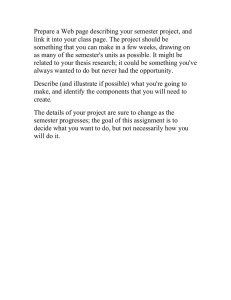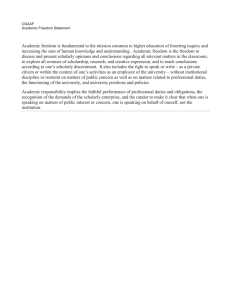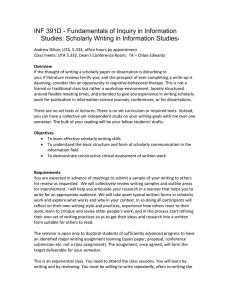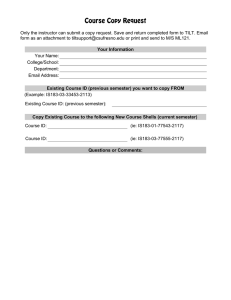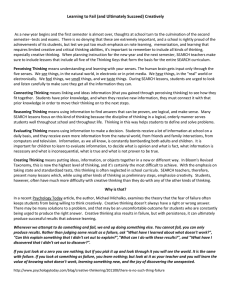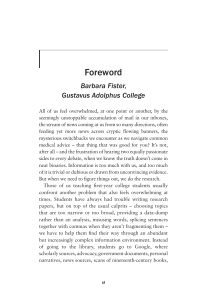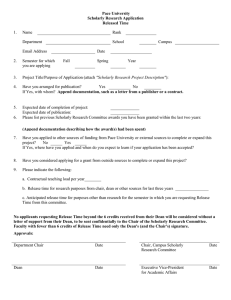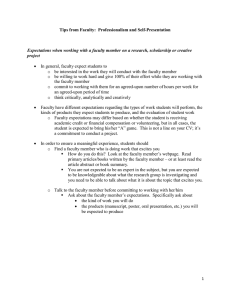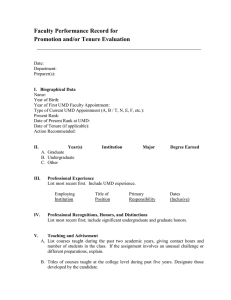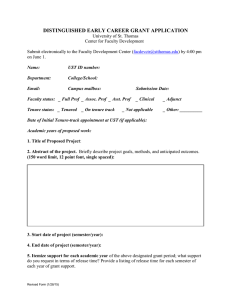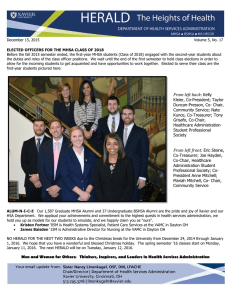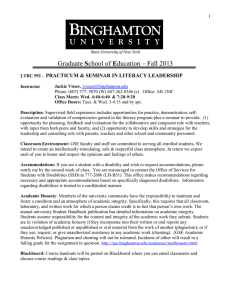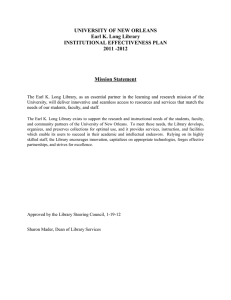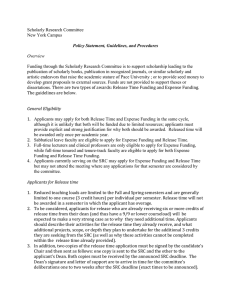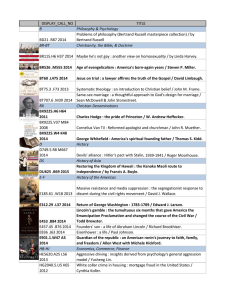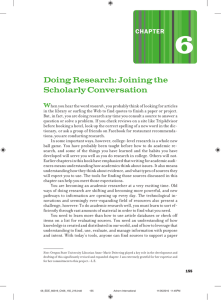Group Project
advertisement
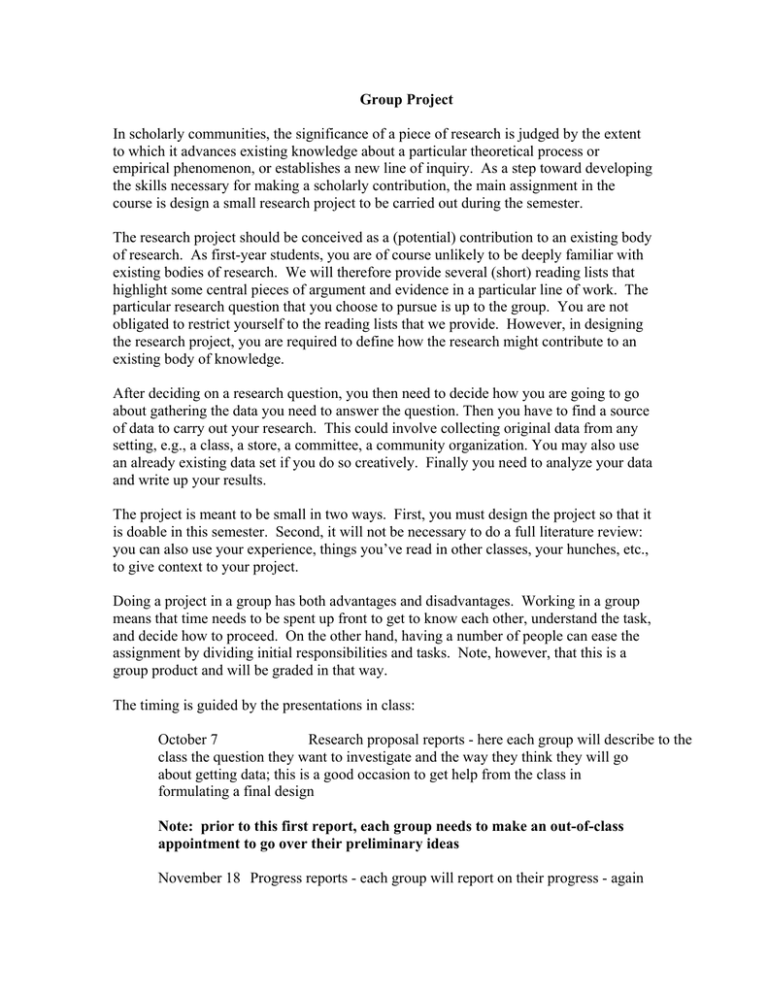
Group Project In scholarly communities, the significance of a piece of research is judged by the extent to which it advances existing knowledge about a particular theoretical process or empirical phenomenon, or establishes a new line of inquiry. As a step toward developing the skills necessary for making a scholarly contribution, the main assignment in the course is design a small research project to be carried out during the semester. The research project should be conceived as a (potential) contribution to an existing body of research. As first-year students, you are of course unlikely to be deeply familiar with existing bodies of research. We will therefore provide several (short) reading lists that highlight some central pieces of argument and evidence in a particular line of work. The particular research question that you choose to pursue is up to the group. You are not obligated to restrict yourself to the reading lists that we provide. However, in designing the research project, you are required to define how the research might contribute to an existing body of knowledge. After deciding on a research question, you then need to decide how you are going to go about gathering the data you need to answer the question. Then you have to find a source of data to carry out your research. This could involve collecting original data from any setting, e.g., a class, a store, a committee, a community organization. You may also use an already existing data set if you do so creatively. Finally you need to analyze your data and write up your results. The project is meant to be small in two ways. First, you must design the project so that it is doable in this semester. Second, it will not be necessary to do a full literature review: you can also use your experience, things you’ve read in other classes, your hunches, etc., to give context to your project. Doing a project in a group has both advantages and disadvantages. Working in a group means that time needs to be spent up front to get to know each other, understand the task, and decide how to proceed. On the other hand, having a number of people can ease the assignment by dividing initial responsibilities and tasks. Note, however, that this is a group product and will be graded in that way. The timing is guided by the presentations in class: October 7 Research proposal reports - here each group will describe to the class the question they want to investigate and the way they think they will go about getting data; this is a good occasion to get help from the class in formulating a final design Note: prior to this first report, each group needs to make an out-of-class appointment to go over their preliminary ideas November 18 Progress reports - each group will report on their progress - again this is a chance to get help from the class December 4 Final public group reports - each group will give a final formal presentation on their research project December 11 final written group report is due

